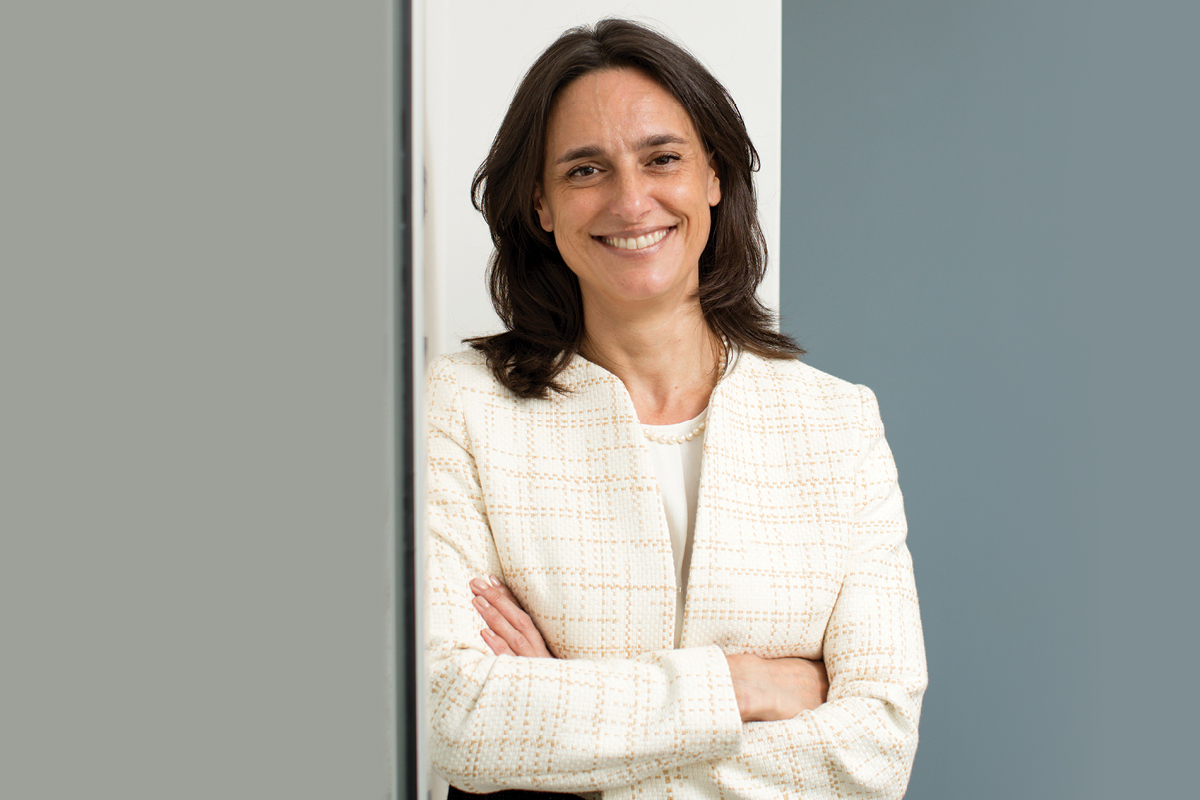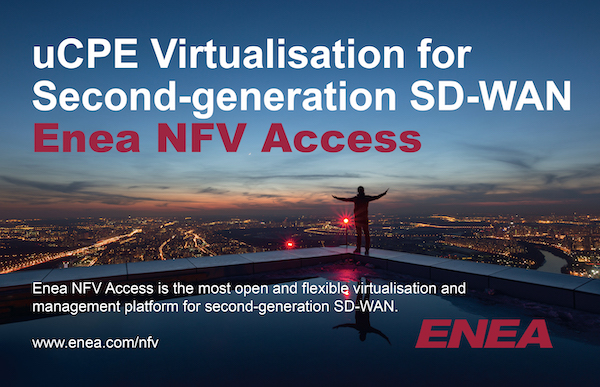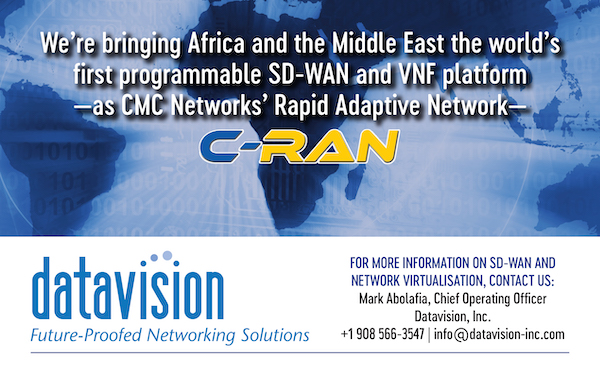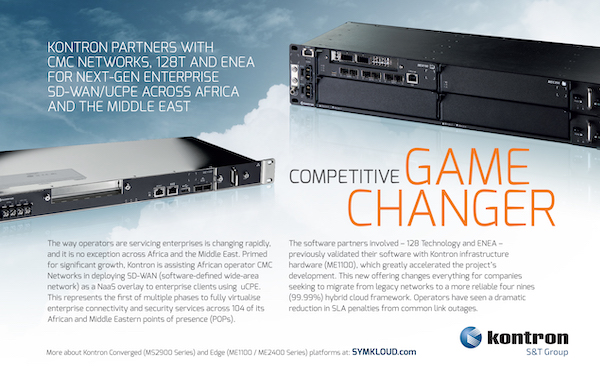Marisa Trisolino has had two very different career tracks. For more than two decades, she was part of AT&T, starting out as an intern and scaling the ranks, before moving to CMC Networks last year, where she is now CEO.

Going from being entrenched within a company to coming in as the brand-new boss was a relatively smooth transition. “It was an offer I couldn’t refuse,” she says. “The wholesale telecom industry is one that I’m quite familiar with. Prior to CMC, I held and enjoyed a variety of roles at AT&T over a period of 21 years, which, in hindsight, was preparation for the role I’m in today.
“AT&T is a great business to have worked for and I’m equally fortunate now – CMC Networks is a fantastic fast-paced company, energised by a dynamic team of employees. I’m incredibly fortunate to be a part of this.”
Marisa is proud also to head up a company that is embracing gender diversity. While IT and telecommunications are traditionally male-dominated fields, the current split at CMC Networks is 60/40.
“It’s seldom that I find myself in a meeting or event, especially now in a more senior role, where there are other female attendees,” she observes. “Inclusion and diversity are critical to change this environment. CMC still has some work to do, but we are well ahead compared to other ICT companies.”
Marisa believes in an open-door policy, with a leadership style that encourages collaboration. “Transparent communication and a high work ethic are key,” she says. “I very much enjoy an open dialogue. It helps keep me grounded on where we stand from an operational perspective, and understand where there may be bottlenecks.”
Marisa points out that this collaborative approach allows her to celebrate the success of the team as well. “There is nothing more satisfying than seeing individuals develop and succeed so that the company succeeds as a whole,” she says.
“Being able to provide a platform and opportunity for the team to grow and expand their horizons is so rewarding. Everyone deserves the chance to develop, and helping to pave the way to success is the most enjoyable part of the job.”
CMC Networks is the largest pan-African and Middle Eastern carrier, boasting 78 points of presence across 51 countries in Africa and, in total, 108 worldwide, so it makes sense that Marisa is excited about bringing innovations such as AI, cloud computing, M2M and blockchain to Africa.
“We have assisted private cloud developers and local ISPs to deploy cloud services in the countries they operate in, resulting in uplifting economies and connecting the unconnected,” Marisa says. “CMC is at the forefront of the latest technology deployments across Africa and we will continue to challenge ourselves to maintain this position.”
“CMC is at the forefront of the latest technology deployments across Africa and we will continue to challenge ourselves to maintain this position.”
A key strategy for CMC is to leapfrog the Software-Defined Networking (SDN) environment and roll out SD-WAN (Software-Defined networking in a Wide Area Network) in Africa and the Middle East. “Probably the best analogy for SD-WAN and traditional routing is to imagine people trying to get home from work during rush hour,” Marisa says.
“When everyone takes the highway, it gets congested and delays everyone. At this time, it might be better for some people to take the side roads to get home. This path may be longer but will get them home faster. It will also reduce additional congestion on the highway. SD-WAN offers a navigation system for networks similar to what Google Maps does for driving on roads. Navigation apps show the driver alternate routes to take that might be longer but will get the driver to the destination faster. It does this by understanding the current status of traffic on different roads and suggesting drivers take alternate routes. SD-WAN can enable similar functionality for networks by directing application traffic on different network segments, thereby avoiding network congestion and efficiently utilising network resources.”

As the leader in the SDN space in Africa and the Middle East, CMC developed its own SDN platform known as C-RAN™ – CMC Rapid Adaptive Network. “It allows us to offer our network at a competitive price,” Marisa says.
“As the need for SD-WAN-based services increases across the African continent, our customers can leverage the next-generation SD-WAN capabilities, allowing for a smooth transition from legacy networking technologies to the rigorous demands that the next-generation IP networks require,” she explains.
“This provides the required four nines (99.99%) service-level agreement (SLA) in Africa and does away with SLA penalties that all network providers have to pay. It’s a first for Africa and is a game-changer in supporting both short- and longer-term plans to roll out SDN and NFV-based (network functions virtualisation) network services.”
Africa is an important and strategic market for CMC and its majority shareholders, the Carlyle Group. “Take a look at a global map – Africa looks relatively small on a physical map, but it is bigger than China, India, the majority of Europe and the continental United States combined,” Marisa explains.
“Take a look at a global map – Africa looks relatively small on a physical map, but it’s bigger than China, India, the majority of Europe and the continental United States combined.”
“It is about 1.8 times the size of Russia and three times the size of Canada. Approximately 1.2 billion people live on the African continent, which makes up about 15% of the world’s population. So now that you get the size of Africa, you can guess that with this large geography comes long WAN links, which impact the performance and reliability of connectivity across Africa.”
Poor internet connectivity, especially outside the major cities, is one of the biggest challenges. “While many larger cities are connected via sea cable, factories, warehouses and other facilities outside of these areas that require internet connectivity suffer from high cost and low-quality links,” Marisa says.
“Regulated markets in many countries lead to high IPLC (international private leased circuit) costs and the extensive use of high latency, low bandwidth links such as satellite and 4G quality. At the end of the day, cost-sensitive customers demand high-quality communication. The distance between locations, latency inhibiting cloud adoption and regulated and monopolised markets all result in high telecom costs, which are all part of the challenges we face.”
To address high bandwidth costs, CMC partnered with 128 Technology/Redvine and Kontron to develop a unique SD-WAN solution that doesn’t use any tunnels, resulting in a bandwidth saving of 30–40% compared to similar products.
“This, together with unique features that 128T developed to improve the reliability and quality of choppy internet links, allows CMC to address the challenges of the MEA market, with lower cost and better quality,” she says. “The technology in our network, together with the wide coverage of CMC’s network that services 51 out of the 54 countries in Africa and 15 countries in the Middle East, is absolutely unmatched in terms of quality, price and speed of deployment.”
One of the biggest opportunities in the MEA region is the acceleration of cloud adoption. CMC’s recent collaboration with Teraco’s Africa Cloud Exchange has resulted in the successful Multi Cloud Connect solution.
“It’s a platform that allows CMC to finally provide a direct connection to AWS Direct Connect and Microsoft Azure ExpressRoute cloud platforms across multiple countries in Africa,” Marisa explains.
“This significant offering enables African ISPs and operators to connect directly without having to route to Europe and back to Africa. By leveraging CMC’s massive African footprint, Multi Cloud Connect will also drastically reduce latency through the African Cloud Exchange.”
Marisa believes the nature of the Africa Cloud Exchange will encourage and lead to increased cloud innovation. “It is an outstanding platform and will support us to achieve our strategic cloud objective, which centres on solving cross-border cloud connectivity problems throughout Africa,” she says.
“CMC’s customers will experience the most direct and best cloud experience across Africa. We are the first to solve the issue of existing cross-border cloud connectivity across the continent.”
The innovations CMC has invested in are crucial because dependability is paramount to succeeding in the IT and telecommunications industry. “Our customers need to rely on CMC blindly across the board, ranging from ensuring their data is secure, their connectivity has the best cost and lowest latency, to CMC implementing services on the exact date it is required,” Marisa explains.
“Africa and the Middle East pose complex geographies. But no matter how hard to reach the location or how complex the solution, CMC has the expertise, knowledge and can-do attitude ingrained in our culture – we’ve built it over the past 30 years.
“We have strong relationships with our almost 300 suppliers and vendors based in MEA. Looking at that number alone can help you understand that CMC drives agility, speed to market and cycle time. There is no other operator in this region that can come close to this scale.”
CMC is the number one telecommunications company in Africa deploying a fully Open Source SDN network, providing end-to-end SD-WAN services and cross-border cloud connectivity. Over the next five years, it will keep investing to ensure it retains that slot.
“It goes without saying that CMC will be scaling in new markets and expanding our presence on top of our already existing coverage,” Marisa says. “We need to be present and deliver the requirements and technology wherever our customers need us to be.”
Proudly supported by:





